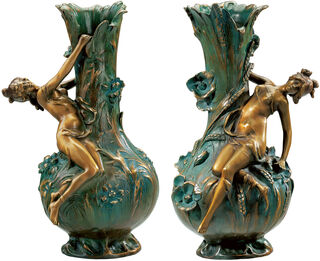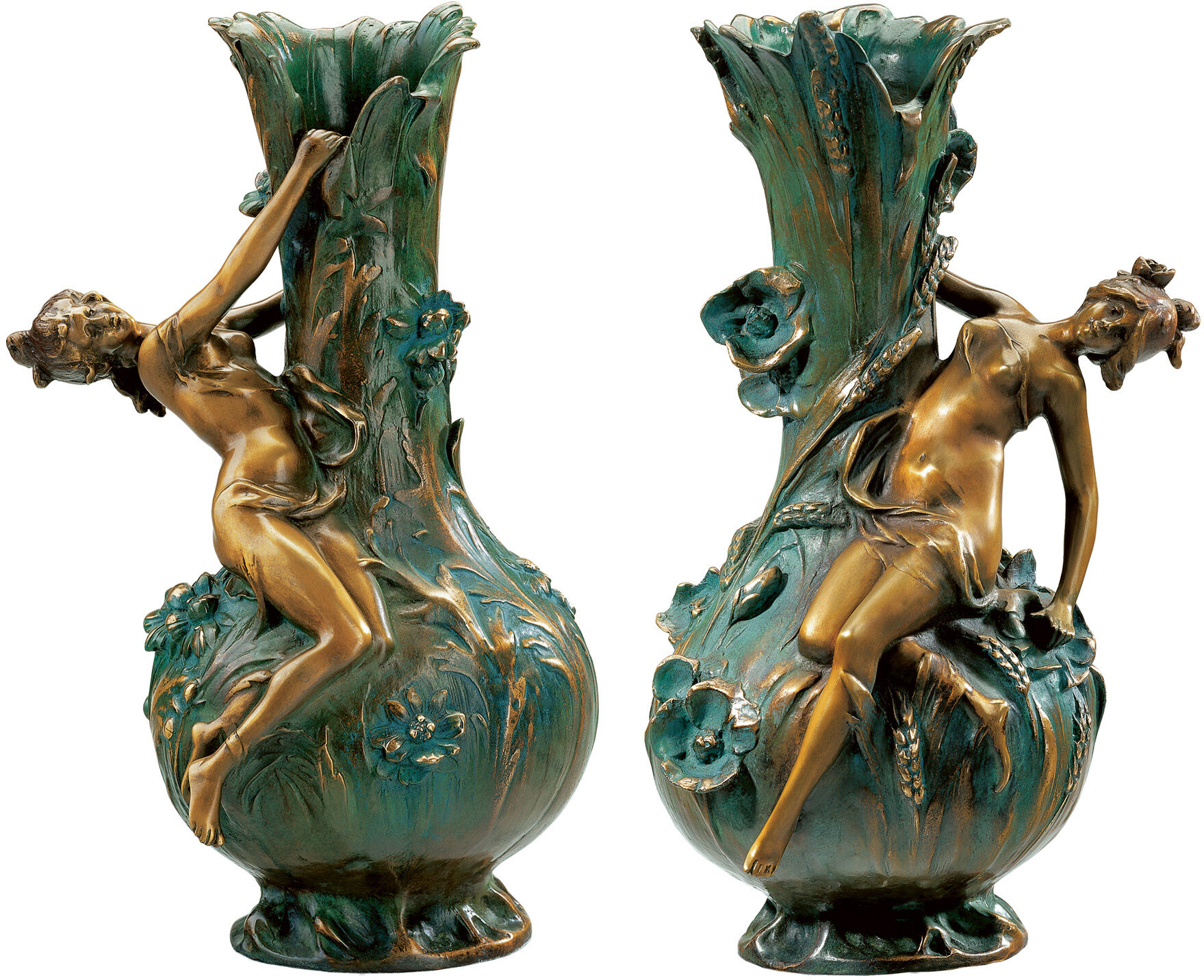Set of 2 vases "Marguerites" and "Coquelicot", bronze version (antique green)
Set of 2 vases "Marguerites" and "Coquelicot", bronze version (antique green)
Quick info
museum replica | bronze | handmade | hand-patinated | partly polished | height 37 cm
Detailed description
Set of 2 vases "Marguerites" and "Coquelicot", bronze version (antique green)
Moreau was the Art Nouveau star and the favourite artist of the Paris salon. He won many awards for his sculptures and objects. These charming vase objects were cast directly from the original as slightly scaled-down museum replicas.
Original: Bronze, Paris 1900.
ars mundi museum replica, height 37 cm each. Edition in fine bronze, cast by hand using the Lost-Wax-Process, patinated by hand and partially polished antique green.
This set contains the following products
Art Nouveau, or the German term Jugendstil (lit.: "Youth Style"), is the art epoch between 1890-1910. The name originates from the Munich-based magazine "Jugend" (Youth), founded in 1896. It was the German counterpart of Art Nouveau (France), but also internationally known as Modern Style (England) or Secession (Austria).
Art Nouveau conquered all of Europe and innumerable works were created, ranging from painting and applied arts to architecture. One of the requirements of Art Nouveau was the artistic design of everyday objects, i.e. beauty and practicality were combined. The desired unity of the artistic ability could only be achieved through individually influenced design, which made the Jugenstil the precursor of modernism. The essential characteristic of Art Nouveau is linear, often asymmetrical ornamentation. The models are particularly taken from nature and flora.
Major Art Nouveau centres were formed in Munich, Darmstadt, Brussels, Paris and Nancy (Glass Art by Emile Gallé). The Viennese architecture of that time was determined by Otto Wagner and J. Hoffmann. Gustav Klimt created paintings that gave sensual shape to the spirit of Art Nouveau.
A true-to-the-original reproduction of an artwork in the same size and with the best possible material and colour uniformity.
The mould is usually taken directly from the original so that the replication reproduces even the finest details. After casting the replication, using the most appropriate method, the surface is polished, patinated, gilded or painted according to the original.
A replication of ars mundi is a recognizable copy of the original.




